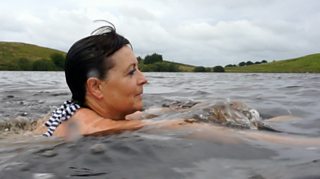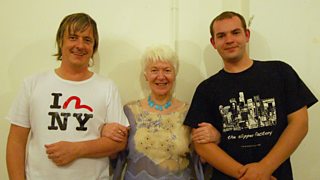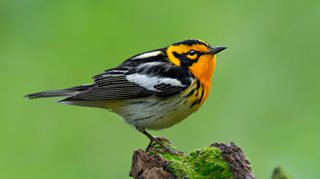What do you do when the World Cup’s on but you can’t get reception on your telly — and you live somewhere so remote that it’s been called ‘’?
You dig. For four miles. Uphill.
So it was in the run-up to the 1978 World Cup, broadcast from the other side of the world in Argentina.
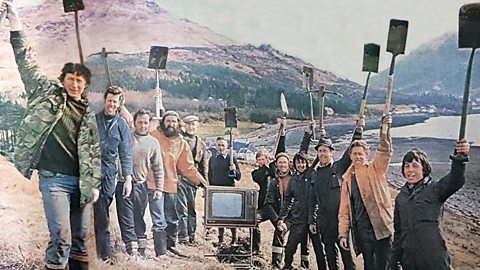
Few could afford to go to World Cup ’78, but one group of Highlanders dug deep to bring Argentina to them
Scotland dared to dream that it could win the World Cup!
Over the course of four gruelling weekends, 16 dedicated Scotland fans dug a trench and laid a cable all the way from their lochside village on the Knoydart peninsula up to an aerial at the top of a neighbouring mountain.
We were digging to see Scotland win the World Cup.
Local estate worker John Murdo Morrison was just 18 years old at the time.
“[Then-Scotland manager] Ally MacLeod promised us we were going to win.
“You went out at 9 in the morning and wouldn’t be finished ’til about 6 in the evening. You dug like hell. There was a great community spirit about it all.”
But it was worth it.
Despite occasionally going wrong – much like the football team – the cable held up long enough for the locals to enjoy the bittersweet pleasure of watching Scotland play in Argentina.
To what lengths would you go to watch a World Cup goal this good?

World Cup countdown: Gemmill's glorious goal - 1978
50 great World Cup moments: Archie Gemmill's sensational goal against Netherlands - 1978
Despite the team’s heartbreaking exit on goal difference at the group stage, there are only smiles in Knoydart at the memory of all that back-breaking work.
“Ally MacLeod was something special.”

Archie Gemmill
Even Archie Gemmill’s fancy footwork couldn’t save Scotland from defeat

In the run-up to the 1978 World Cup, AC/DC played at the Glasgow Apollo in Scotland strips
AC/DC, like everyone else, were swept up in World Cup Fever.

World Cup ’78
-
![]()
-
![]()
Top 10 goals from the tournament
Â鶹ԼÅÄ Sport’s favourites
-
![]()
Story of the 1978 World Cup
The hosts won on a ticker-tape strewn pitch.
Scotland’s group stage results
| Team | Score | Team |
|---|---|---|
| Peru | 3-1 | Scotland |
| Scotland | 1-1 | Iran |
| Scotland | 3-2 | Netherlands |
Scotland’s upcoming friendlies
-
![]()
Peru v Scotland
Â鶹ԼÅÄ One Scotland, 1.45am, 30 May 2018
-
![]()
Mexico v Scotland
Â鶹ԼÅÄ One Scotland, 12.50am, 3 June 2018
2018 FIFA World Cupâ„¢
-
![]()
Â鶹ԼÅÄ coverage
Latest news stories, results, fixtures, video and audio.
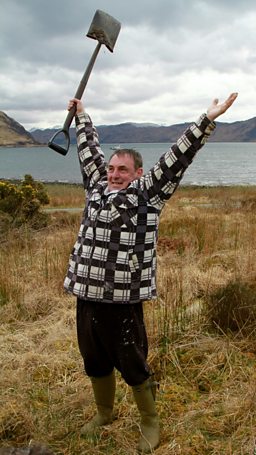
-
![]()
Scotland 78: A Love Story
Documentary featuring rare archive footage chronicling Scotland’s performance in the 1978 World Cup, when the team was under the aegis of mercurial manager Ally MacLeod.
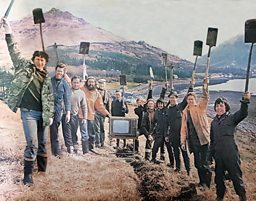
Latest features from Â鶹ԼÅÄ Scotland
-
![]()
'Wild swimming helps me process the grief of losing my son'
The benefits of cold water therapy.
-
![]()
Winter adventures are appealing, but an expert advises caution
Trips in winter require particular knowledge and skills.
-
![]()
The rescuers: Why volunteers risk their lives in mountain emergencies
Landward meets members of the Cairngorm Mountain Rescue Team.
-
![]()
‘Look for the light’ – practical tips to help you through another winter with SAD
Useful advice and tips to combat low moods at this time of year.
-
![]()
How you could be a binge drinker without even knowing
Binge drinking is classed as fewer units than many people may realise.
-
![]()
How chocolate biscuits and drama classes helped one man leave prison behind
The healing power of creativity.
-
![]()
'When people believe in you, it’s life-changing'
Author Graeme Armstrong revisits the man who helped turn his life around.
-
![]()
The 'breath-taking' display of US birds swept on to British soil
Recent storms have brought rare birds to our shores.
-
![]()
Six things we learned about Alan Cumming on Take the Floor (Spoiler: includes accordions)
The actor spoke to Take the Floor's Gary Innes.
-
![]()
How street gangs trap young men in a dangerous cycle of violence
The almost inescapable pull of life in a gang.
-
![]()
Why stylist Gok Wan believes there's no such thing as bad fashion
The fashion expert says we should stop following rules and do what feels right.
-
![]()
Is sending a CV still the right way to apply for a job?
They've been central to job applications for years, but are they worth it?








